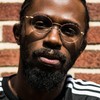Emtee
Mostly, though, I was there to explore the connections between the black experience in South Africa and the black experience back home, and how young black artists on both sides of the pond are responding their traumatic subjugation under people of European decent. Twenty-four years after Mandela’s election, South Africa’s first post-apartheid generation is now coming of age; they are able to choose what to study at university, and to express themselves creatively without the strict censorship laws that harried their predecessors. I wanted to find out how artists in Johannesburg were shaping the city’s present, and grappling with its turbulent political past.“I got on the trap wave and I rolled with it because this shit talks about what we go through,” he told me. “Just in a different way: My nigga’s auntie not selling dope, but she’s selling alcohol. I don’t have a trap house, but I got a shack. That’s the African trap movement.”
Moonchild Sanelly
Though Moonchild says moving to Joburg was instrumental to her career, many of the other young artists I spoke to told me the scene can sometimes feel more competitive than supportive.“Johannesburg is in a weird place right now, where everyone is gunning for success and everyone is trying to get there first,” said Dominique Soma, a local events organizer. “I think there’s a crab-in-a-barrel mentality where people would rather pull each other down than help each other get to the next level.”Area artists recommended I talk to Soma as one of the most crucial figures in the city’s music scene. She owns a record shop with her partner, and for over a decade has organized hip-hop shows at venues as small as neighborhood bars and as large as festival grounds.When Soma got into the business In the early-to-mid 2000s, South Africa’s hip-hop scene was booming. While the US was entering the beginning stages of its trap wave, artists in SA were still focused on the genre’s boom bap sound and DJ culture. Miss Nthabi was a trailblazer for women in the scene; “Reality Check,” the first song she ever recorded, got play on national radio, which is remarkable even by today’s standards for a debut. Skwatta Kamp, a seven-man rap group from Soweto, resonated with the public by using their music to report on the country’s lopsided struggle with poverty—which black South Africans still endured the vast majority of, a decade after apartheid ended. In 2003, they became the first South African rap act to have an album be certified gold (which at the time required selling 25,000 units in the country), with their sophomore effort, Mkhukhu Funkshen.“I think often times black South Africans have an inferiority complex in comparison to African Americans or black British. South African hip-hop isn’t as well developed as the American hip-hop industry. There’s this desire we have to participate on a grander scale.”- Zandi Tisani
Petite Noir
In ways, Petite’s approach of navigating between worlds mirrors that of Black Coffee, a Durban-raised producer and DJ who has emerged over the years as South Africa’s biggest dance music export. For more than a decade, he’s been a household name in the country for joining house elements with the global appeal of jazz. Now his name is recognizable to the bulk of dance music fans across the globe. In 2017, he began his first residency at the prestigious electronic music venue Hi Ibiza in Spain, recognized by many as the mecca for dance music. Over the past few years, he’s collaborated with international pop stars, making the official remix to Alicia Keys’ “In Common” and having his 2010 “Superman” track sampled for Drake’s “Get It Together.” In 2016, Black Coffee was also the first South African to receive a BET Award. Occupying these different levels of the music world makes him an anomaly, but also an example of how branching out to various markets can be vital for South African artists.“Living here has taught me that in Joburg, they don’t say ‘gentrification.’ They say ‘urban rejuvenation,’ and I think that whole choosing of the words to describe the same thing is hilarious.”
Lady Skollie
